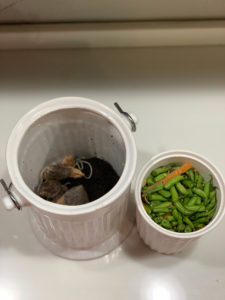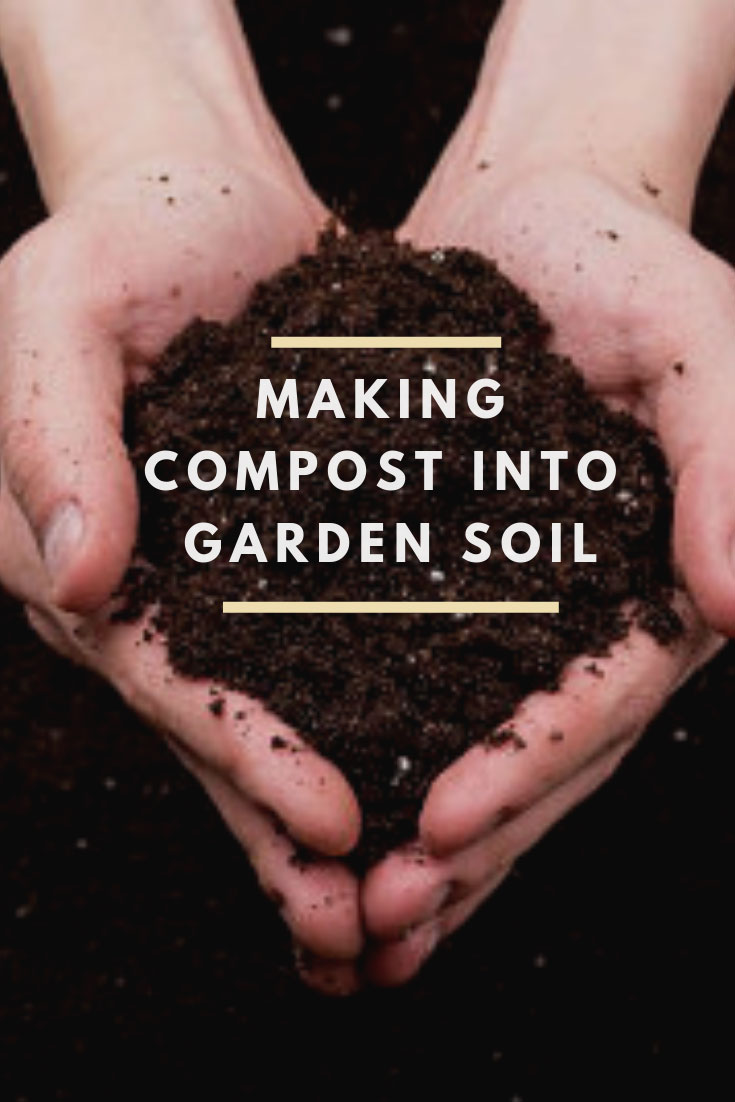How to make compost fertilizer is easy if you know how to do it. Compost fertilizer is essential when it comes to natural gardening. Not only does good compost make your garden healthier and grow well, but it’s good for the environment.
But how to make good compost fertilizer naturally and what components are needed to make your own natural garden soil? I will try to answer the things you need to know about natural compost and garden soil in gardening.
Table of Contents or Collapse to Hide
What is Compost Fertilizer and Garden Soil?
Before we tackle the question of the process for making compost and what components are needed to make your own garden soil, we need to understand what compost and garden soil are.
A website about gardening, Bonnie plants says that compost is decomposed of some organics materials such as green clippings, leaves, dead plants, weeds, garden debris, straw and hay, food scraps, and many others that are used to stimulate the growth of a plant and enrich the soil with nutrients and microbes.
While on the other hand, garden soil or topsoil is a natural earth soil that you can find on the ground which could be a mixture of manure and compost to stimulate the growth of the plants.
Kinds of Compost Fertilizer
They are four types different of composing which are farmyard manure, homemade compost, green manures, and vermicompost.
- Farmyard manure is compost that is a mixture of cattle excreta, organic materials such as fodder and roughage, and urine. This mixture contains good nutrients for the soil. The nutrients contained in farmyard manure are nitrogen, phosphorus, and potassium. Try to ensure the cattle were not recently given shots, if possible. I also make “manure tea” and use this to fertilize my plants.
- Homemade compost is compost made from scraps such as kitchen waste, vegetables, weeds (with no seeds), and other natural decomposed materials. Making this compost takes three to six months of the decomposing process.
- Green Manure is compost that is made from green plants and crops. Those plants and crops are used to add a lot of nutrients such as nitrogen and phosphorus to improve the soil.
- Vermicompost is what we do on our homestead. We took an old round trough and added a layer of papers and barn straw, red wigglers, and compost we made the year before. Most all our kitchen waste goes in this bin to feed the worms. I will be doing a whole post centered around this form of composting.
Making compost 101
Now that we know what compost is, the uses, the benefits, and its kinds, it’s time to make some good compost! Below are the things you need in order to make compost, those things are:
- In the home, preferably a compost pot or jar to house the kitchen scraps.
- Outside, a place to house the compost (either a store-bought one or one you made).
- Some decomposed materials such as washed eggshells, fruit scraps, vegetable scraps, dry leaves chopped wood, hair, or many other decomposed materials according to what kinds and types of compost you will make.
- If you want to make the cold type of compost, it is better to use food waste and your yard waste. Although the materials seem easier to find, the cold type of compost is usually harder to decompose. It takes a year or more. While for the hot type of compost you can use nitrogen, water, air, and carbon. These are easier to decompose and only take 3 months or so.
- Shovel and gloves for handling and turning the compost.
Those are the things that you need to make compost, always remember that there are things you should not use as a material of compost such as diseased plants waste, cat and dog feces, any materials that contain oil, meats, and grease as well as any dairy products. Those materials could produce a smell that attracts many insects and pests to your plant or garden. Be wise with what materials you choose for your compost.
The Process of Composting

There are four processes for making compost. The first process is to pile your combination of brown and green materials. If you want to make hot compost you need to pile materials at least three to four feet deep.
Combine wet green materials and dry materials and put them into 3 to 4 piles. Be aware of the wetness of each pile. If it’s too dry, you can add green materials and add water to moisten it.
#1: Brown materials:
- Straw, hay, small tree limbs, shells from nuts, dried bones, hair clippings, newspaper, cardboard, untreated sawdust, and small bark to name a few.
Green material:
- Usually contains green plants, used coffee grounds, dried, washed crushed egg shells, grass clippings (not with pesticides), and vegetable waste.
Red Wiggler Worms are an added bonus if you prefer, we do! (Note-worms do not care for onions, garlic, and citrus).
#2: Watering:
- To make good compost you need to water it regularly until it becomes damp like a sponge. But you should not water it too much as it can make your compost water clogged and rotten instead of compost. You can check if you water it well enough or not by putting your hands into the center of your pile, if the temperature is warm, then it is decomposing well. You can also use a thermometer as well.
#3: Mixing/Stirring:
- In the process of growing you need to stir your pile of compost with a garden fork to provide oxygen. Do It once a week when your compost is warm or around 130 to 150 degrees F by a thermometer. Be sure to stir it thoroughly and regularly. We built a dual compost tumbler that is very easy to rotate since it’s off the ground and suspended by a rod. I admit it does get very heavy once it gets near full. My husband has to turn it once it’s almost full.
#4: Enjoy your new Soil:
- If your pile turns dry, all brown, and crumbly then your compost is ready to use. You can add four to six inches of the compost made to your plants and flower beds.
Garden Soil, Components and How to Make Soil
Now that we know how to make compost, let’s make the garden soil for the flower beds or garden. There are three components to make a garden soil consisting of one-third of each component:
- Manure or mushroom (please do not use peat moss-it is not sustainable) or a mixture of both (that is how we do it)
- Coarse sand
- Compost
The PH should be around 6.5-6.8.
The first step to making good garden soil is to mix the three components with a garden fork or shovel. After mixing them well, put the garden soil on the garden bed. The second step is to water it regularly. And last but not least, is to wait for two weeks to let the soil settle.
That is all in the process of making compost and the important components for homemade garden soil. Now that you know how to make it, are you ready to start gardening at home today? If you do, be sure to remember that the long process will pay all off in the long run.
If you haven’t read Gardening Tips for Beginners, that can be found Gardening Tips for Beginners. Also, you may like to try your hand at vertical gardening, that post can be read Vertical Gardens for small spaces.
Please leave a comment if you have ever made your own compost or would like to try. I’d love to hear all about it.
Shop Here
We are a participant in the Amazon Services LLC Associates Program, an affiliate advertising program designed to provide a means for us to earn fees by linking to Amazon.com and affiliated sites.
You will not incur extra fees or charges for using the links. We only recommend items we believe in and have tried. If I personally make or sell an item, I will mention this in the post for each item.
Click on the Bar of Dish Soap to Visit Our Amazon Storefront!



Pingback: 7 Container Gardening Tips For Beginners ⋆ Farmhouse-bc
Pingback: Attract More Butterflies In 10 Easy Tips! ⋆ Farmhouse-bc
Pingback: Vertical Gardens For Small Spaces ⋆ Farmhouse-bc
Pingback: Elderberry Vs Pokeberry-the Shocking Difference Of The 2! ⋆ Farmhouse-bc
Pingback: Oyas And Ollas Made Easy For Your Garden ⋆ Farmhouse-bc
Pingback: Seed Organization In 6 Amazingly Simple Ways ⋆ Farmhouse-bc
Pingback: Amazing Horseradish Mustard Recipe ⋆ Farmhouse-bc
Pingback: 5 Shocking Reasons To Buy Dollar Tree Seeds ⋆ Farmhouse-bc
Pingback: 5 Shocking Reasons To Buy Dollar Tree Seeds ⋆ Farmhouse-bc
Pingback: Delicious Smoked Meat For Steak And Chicken Salad ⋆ Farmhouse-bc
Pingback: Gardening Tips for beginners ⋆ Farmhouse-bc
Pingback: Growing millet for birds - Farmhouse-bc
Pingback: Apple Pie Jam - Farmhouse Basic Collection.
Pingback: Zucchini Bread Recipes-Cinnamon and Chocolate Coffee - Farmhouse Basic Collection.
Pingback: Hanging flower basket from the Dollar Tree - Farmhouse Basic Collection.
Pingback: Fish Emulsion Fertilizer, how to make and use! - Farmhouse Basic Collection.
Pingback: Growing gourds for birdhouses, in containers and for profit - Farmhouse Basic Collection.
If some one wishes expert view on the topic of blogging afterward
i suggest him/her to pay a visit this weblog, Keep up the pleasant
work.
Pingback: Many Uses for Eggshells - Farmhouse Basic Collection. %
I truly prize your piece of work, Great post.
Pingback: One-Bowl Banana Bread - Farmhouse Basic Collection.
Pingback: Vermiculite vs. Perlite - Farmhouse Basic Collection.
I got what you mean , thanks for putting up.Woh I am delighted to find this website through google. “Don’t be afraid of opposition. Remember, a kite rises against not with the wind.” by Hamilton Mabie.
Pingback: Hugelkultur Raised Beds - Farmhouse Basic Collection.
Pingback: 11 Plants to Regrow From Cuttings - Farmhouse Basic Collection.
We sure do use henny poo and their bedding. You’d practically see the steam, and once your hand gets near the pile, you can feel the heat. LOL city girl 🙂 xoxo
Wow! I’ve wanted to know more about composting and you surely provided me with the info I needed. Not sure that I’d put my hands in the middle of it to check the temperature (City girl, here) but everything else I am up for! Can you use chicken pooh rather than cow manure?